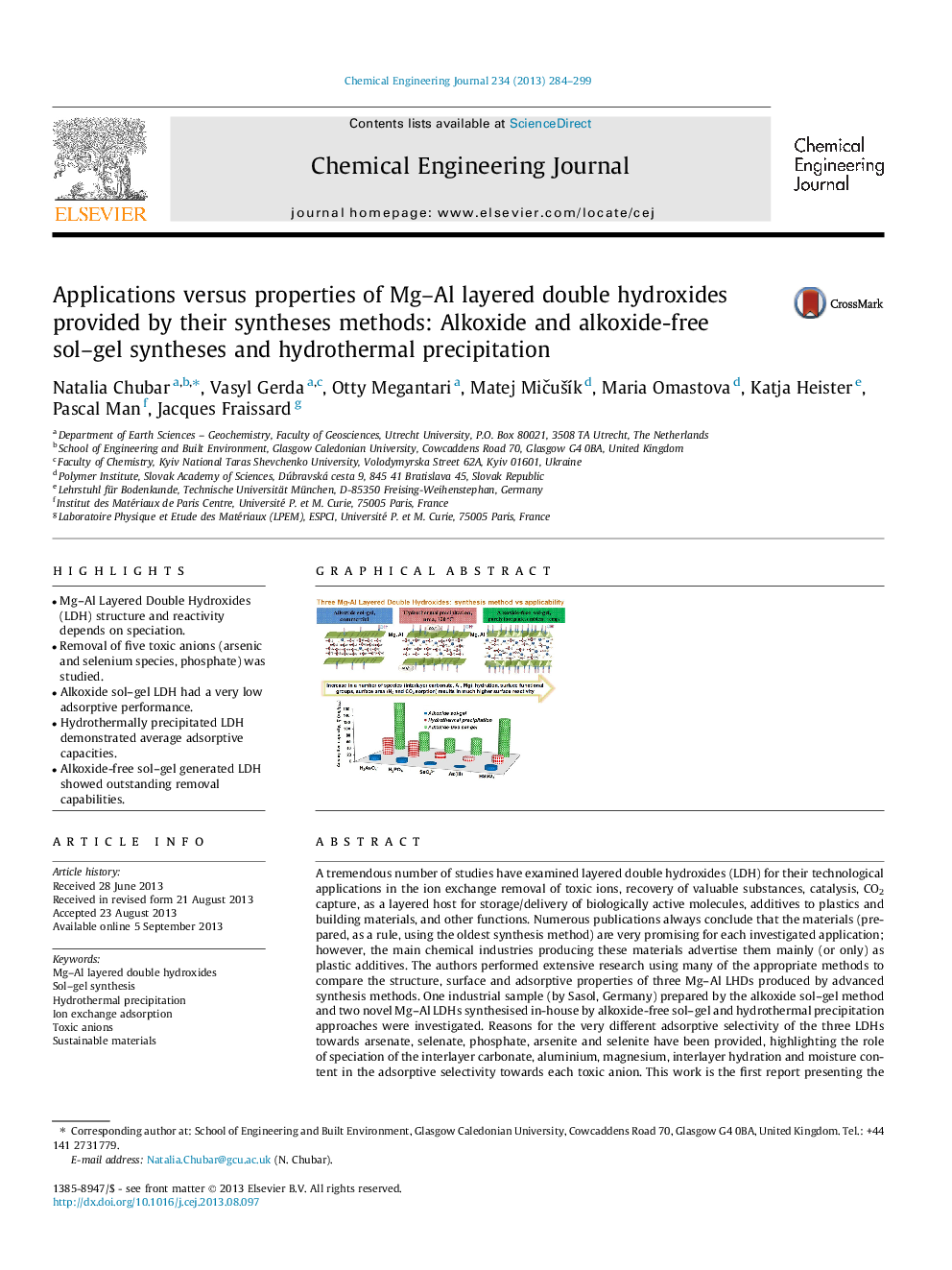| Article ID | Journal | Published Year | Pages | File Type |
|---|---|---|---|---|
| 148077 | Chemical Engineering Journal | 2013 | 16 Pages |
•Mg–Al Layered Double Hydroxides (LDH) structure and reactivity depends on speciation.•Removal of five toxic anions (arsenic and selenium species, phosphate) was studied.•Alkoxide sol–gel LDH had a very low adsorptive performance.•Hydrothermally precipitated LDH demonstrated average adsorptive capacities.•Alkoxide-free sol–gel generated LDH showed outstanding removal capabilities.
A tremendous number of studies have examined layered double hydroxides (LDH) for their technological applications in the ion exchange removal of toxic ions, recovery of valuable substances, catalysis, CO2 capture, as a layered host for storage/delivery of biologically active molecules, additives to plastics and building materials, and other functions. Numerous publications always conclude that the materials (prepared, as a rule, using the oldest synthesis method) are very promising for each investigated application; however, the main chemical industries producing these materials advertise them mainly (or only) as plastic additives. The authors performed extensive research using many of the appropriate methods to compare the structure, surface and adsorptive properties of three Mg–Al LHDs produced by advanced synthesis methods. One industrial sample (by Sasol, Germany) prepared by the alkoxide sol–gel method and two novel Mg–Al LDHs synthesised in-house by alkoxide-free sol–gel and hydrothermal precipitation approaches were investigated. Reasons for the very different adsorptive selectivity of the three LDHs towards arsenate, selenate, phosphate, arsenite and selenite have been provided, highlighting the role of speciation of the interlayer carbonate, aluminium, magnesium, interlayer hydration and moisture content in the adsorptive selectivity towards each toxic anion. This work is the first report presenting the regularities of the LDHs structure, surface and anion exchange properties as a function of their syntheses method. It establishes the links to potential technological applications of each investigated LDH and explains the necessary properties required to make the technological application cost-effective and efficient. The paper might accelerate industrial applications of these advanced materials.
Graphical abstractFigure optionsDownload full-size imageDownload as PowerPoint slide
